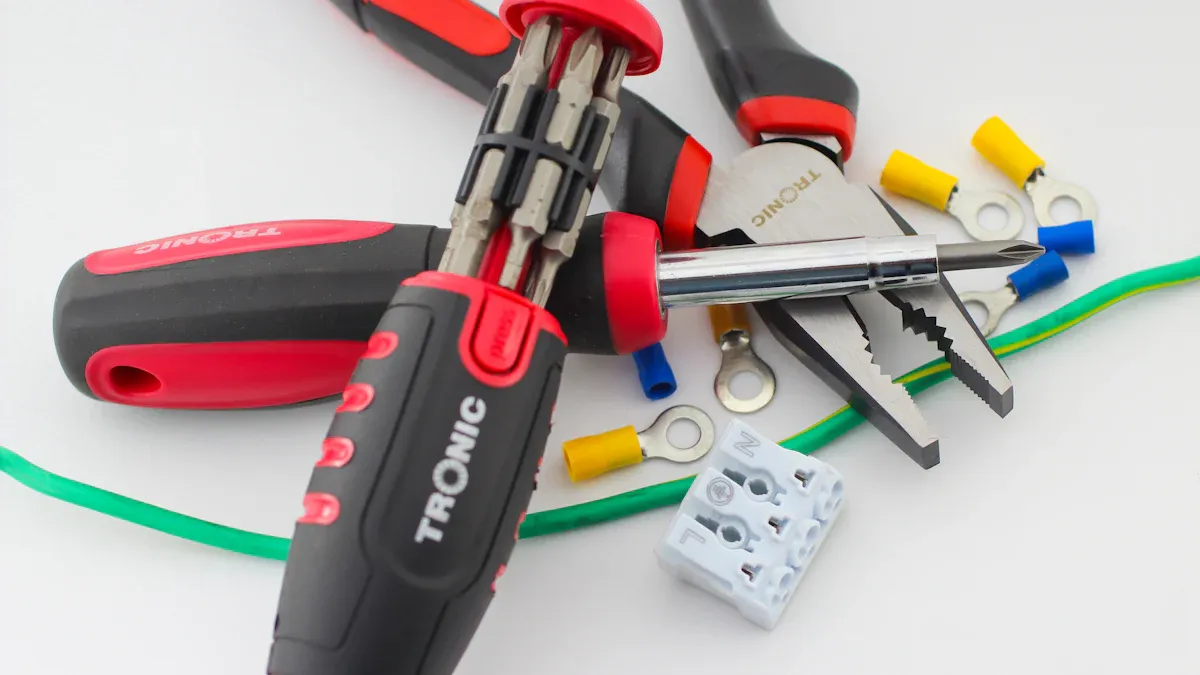To pick the right cap crimper, match the crimper to your container and cap. Think about what you need for production. The right tool keeps seals tight and shows if someone opened it. This keeps samples safe and helps with strong packaging. In food and medicine, the right crimper helps you follow rules and stay clean. SINBON has smart capping tools that work well and are dependable. Always look at what you need before you decide.
Key Takeaways
-
Pick a cap crimper that matches your container and cap size. This helps make sure the seal is tight and safe. Choose a manual, electric, or automatic crimper based on how many items you need to seal. Use crimp tools that let you change settings and have safety features. This helps you get strong and even seals every time. Check each seal closely to stop leaks and keep products safe and fresh. Ask experts for help and follow the rules for your industry. This keeps your business and customers safe.
Cap Crimper Basics

What Is a Cap Crimper
A cap crimper is a tool or machine that helps you seal caps onto bottles, vials, or other containers. You use a cap crimper to press and shape the cap so it fits tightly and does not come off easily. In many industries, you need a strong seal to keep products safe and fresh. Some cap crimpers work by hand, while others use electricity or air pressure for bigger jobs.
You can find several main parts in a typical cap crimper. Each part has a special job to make sure the crimp is strong and even. Here is a table that shows the main components and what they do:
|
Component |
Function Description |
|---|---|
|
Cap Feeder |
Moves and sorts caps automatically to the capping area. |
|
Cap Chute |
Aligns and orients caps before they go onto bottles. |
|
Star Wheel |
Holds and moves bottles under the capping heads. |
|
Capping Head |
Uses rollers to crimp the cap, making threads and tamper-evident seals. |
|
Bottles Conveying System |
Moves bottles through the machine for capping. |
Some cap crimpers, like pneumatic crimpers, use air pressure to seal plastic caps with aluminum rings. These tools help you get a tight, tamper-evident closure, which is important for safety.
Why Cap Crimping Matters
When you crimp a cap the right way, you protect your product from leaks, contamination, and tampering. A good crimp keeps the contents safe and helps you meet quality standards. If you do not crimp the cap correctly, you can face several problems:
-
Over-crimping can damage the stopper, cause leaks, or make it hard to reseal the container.
-
Under-crimping leaves the seal loose, which can lead to evaporation or spills.
-
Using the wrong crimp technique can distort the cap or stopper, making it easy for the cap to come off or for the product to spoil.
-
Poor crimping can increase the number of rejected products and put users at risk.
-
Quality checks, like closure integrity tests, help you find and fix crimping problems before products leave the factory.
You should always follow the right steps and use the correct cap crimper for your container. This helps you keep your products safe and your customers happy.
Application Requirements
Container and Cap Types
You should know your container and cap before picking a cap crimper. Many industries use bottles, jars, and tubes. Each needs a special cap and sealing way. Food packaging uses twist-off or lug caps for jars. Drug companies use child-resistant and screw caps for safety. Personal care products sometimes have dispensing caps. The table below shows common cap types and where they are used:
|
Cap Type |
Industry/Application |
Description/Features |
|---|---|---|
|
Twist-off Caps |
Food Packaging |
Airtight seal, reusable, used for jams and sauces |
|
Lug Caps |
Food Packaging |
Secure threading, used on glass jars |
|
Dispensing Caps |
Food/Personal Care |
Controls liquid flow, may be tamper-resistant |
|
Child-Resistant Caps |
Pharmaceutical |
Push-and-turn, prevents accidental opening |
|
Screw Caps |
Pharma/Beverages |
Easy to use, strong seal for bottles |
|
Crown Caps |
Beverages |
Tamper-evident, decorative, used on drinks |
You need to match your crimper to the container shape. Some bottles are wide, others are narrow. Jars and tubes come in many sizes. The right crimper helps seal each type well. SINBON makes machines for bottles, vials, and jars. Their models work with Boston round bottles, dropper bottles, and wide mouth jars. You can use SINBON’s crimp terminals for strong packaging connections. If you use headspace vial seals, SINBON’s vial cap crimpers give a tight seal.
Cap Size and Material
Cap size and material matter when choosing your crimping tool. Measure your cap’s diameter and check its material. Some caps are plastic, others are aluminum or steel. Drug vials often use 13mm or 20mm flip-off caps. Food jars may use bigger metal or plastic lids. SINBON has machines for different sizes and materials. Their modular design lets you change jaws fast for different caps. You can adjust stroke length and pressure for your cap. This helps with crimp connectors and accessories for many packages.
https://www.sinbon.hk/Capping-Machine
SINBON
